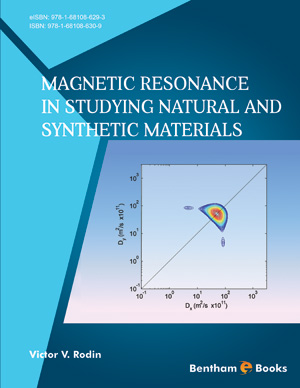Abstract
The chapter presents the results of NMR methods in studying natural silk Bombyx mori with low water content (0.07 g H 2O per g dry mass). The silk fibers have been also studied on mechanical perturbations measuring the stress-strain dependences for silk fibers. The results obtained are compared with published data on mechanical studies of polymer materials and model calculations of stress-strain curves. The free induction decays (FIDs) in the silk samples have been analyzed within the model of two components: a slow relaxation component was associated with water protons whereas the fast one was related to macromolecular protons. The results discovered a slow molecular mobility and strong interaction of water molecules to silk macromolecules. The chapter presents also NMR relaxation methods in studying interaction of water with macromolecules in oriented and nonoriented collagen fibers with different cross-linking level. The NMR relaxation times (T1 and T2) have been studied in the collagen fibers oriented along the static magnetic field B0. Several NMR relaxation experiments have been done on randomly oriented fibers and for collagen samples with varying hydration level. Cross-relaxation effect has been studied on silk and collagen samples with low water content. Correlation times as characteristics of molecular motions have been considered to compare quantitatively the mobility of water and biopolymer macromolecules in natural silk fibers and collagen tissues with different degrees of binding molecules.
Keywords: Collagen, Correlation times, Cross-relaxation (CR) rate, Elastic deformation, Fourier transform (FT), Free induction decay (FID), Magnetic Resonance Imaging (MRI), Maximal stress, NMR, Second moment, Silk, Spinlattice (longitudinal) relaxation time T1, Spin-spin (transverse) relaxation time T2, Strain ε, T2 anisotropy effect, The activation energy, Water.






















